constituent assembly of india debates (proceedings)- volume vii
constituent assembly of india debates (proceedings)- volume vii
constituent assembly of india debates (proceedings)- volume vii
Create successful ePaper yourself
Turn your PDF publications into a flip-book with our unique Google optimized e-Paper software.
Mahals. The demand for education is however becoming very keen.<br />
In the Warli areas <strong>of</strong> the Thana District visited by us practically all the land had been taken up by<br />
non-tribals and the tribals were reduced to the condition <strong>of</strong> landless serfs. The Bombay Government have<br />
in fact now found it necessary to pass special legislation to prevent alienation <strong>of</strong> land. On account <strong>of</strong> the<br />
acquisition <strong>of</strong> all the land by a few people, the land system in this tract has been virtually transformed<br />
from a ryotwari system to a system similar to the malguzari system <strong>of</strong> the Central Provinces.<br />
(c) Central Provinces & Berar. - The partially excluded areas, <strong>of</strong> which Mandla District is the<br />
largest unit, contain only 833,143 tribals out <strong>of</strong> a total tribal population <strong>of</strong> nearly 3 millions. The Gond<br />
(including Maria and Pardhan) is the main tribe in the C. P. and the Korku in the Melghat are prominent<br />
in Berar. Although backward and adhering largely to their own customs and ways in the areas where<br />
they are still most numerous, the tribes have in appreciable degree assimilated the life <strong>of</strong> the rest <strong>of</strong> the<br />
population and tribal institutions are either weak or practically non-existent. Mostly the tribes have taken<br />
to settled cultivation and there is little bewar or dahia in the province. Of handicrafts and cottage<br />
industries, however, there is next to nothing and this is the great weakness <strong>of</strong> the aboriginal economy.<br />
The aboriginal is given to drink but opinion in favour <strong>of</strong> temperance or prohibition seems to be gaining<br />
ground.<br />
The partially excluded areas are, with hardly any exception, administered in the same manner as the<br />
other districts. The C. P. Land Alienation Act <strong>of</strong> 1916 is the only notable legislation enacted specially for<br />
the protection <strong>of</strong> the aboriginals and restricts the transfer <strong>of</strong> agricultural land from aboriginal to nonaboriginal<br />
classes. In 1940,when the C. P. Tenancy Act was amended to confer rights <strong>of</strong> alienation on<br />
certain classes <strong>of</strong> tenants, the application <strong>of</strong> the amending Act to the partially excluded areas was made<br />
subject to certain modifications designed to secure that unscrupulous landlords would not manipulate to<br />
their own advantage the complicated provisions <strong>of</strong> the Act.<br />
A special enquiry into the problems <strong>of</strong> the aboriginals was ordered by the C. P. Government and a<br />
report was submitted by Mr. W. V. Grigson in 1942. Among the points made by Mr. Grigson were the<br />
weakness <strong>of</strong> the tribal representatives in the local boards and the need for provisions to prevent the<br />
application <strong>of</strong> legislation to aboriginal areas except after special consideration. Mr. Grigson was also<br />
examined by us as a witness and expressed himself in favour <strong>of</strong> a system <strong>of</strong> indirect election for the<br />
aboriginals. Opinion <strong>of</strong> a number <strong>of</strong> C. P. witnesses was not in favour <strong>of</strong> reserved representation for the<br />
aboriginals in proportion to their population. Some witnesses preferred nomination out <strong>of</strong> a panel<br />
submitted by the District Officers. At present there are three tribal members in the Legislature although<br />
only one seat is reserved.<br />
The Provincial Government have now created a special Department and inaugurated a scheme <strong>of</strong><br />
development <strong>of</strong> the aboriginal areas in which multipurpose co-operative societies play a prominent part.<br />
Opinion in the C. P. (as in Bombay) was strongly in favour <strong>of</strong> boarding schools with free meals as the<br />
only way <strong>of</strong> making schooling acceptable to the aboriginals.<br />
(d) Orissa. - This province contains a partially excluded area <strong>of</strong> nearly 20,000 sq. miles, i.e., almost<br />
two-thirds <strong>of</strong> the province is partially excluded. The partially excluded area includes the portions <strong>of</strong> the<br />
Madras Agency Tracts transferred to Orissa, the Khondmals <strong>of</strong> the former Angul District and the<br />
Sambalpur District which was formerly in the C. P. The total tribal population <strong>of</strong> the province is<br />
1,721,006 <strong>of</strong> which 1,560,104 are found in the partially excluded areas. The tribes inhabiting this<br />
province are among the most backward in the whole <strong>of</strong> India. The Bonda Porja, Gadaba, Kondh and<br />
Savara are among the most important <strong>of</strong> them. In 1939 the Orissa Government appointed a special<br />
committee to make recommendations for the partially excluded areas (Thakkar Committee) which found<br />
that some tracts were too backward to administer even local boards. Although they have representatives<br />
in the legislature, four <strong>of</strong> the five reserved seats are filled in by nomination and some <strong>of</strong> the nominated


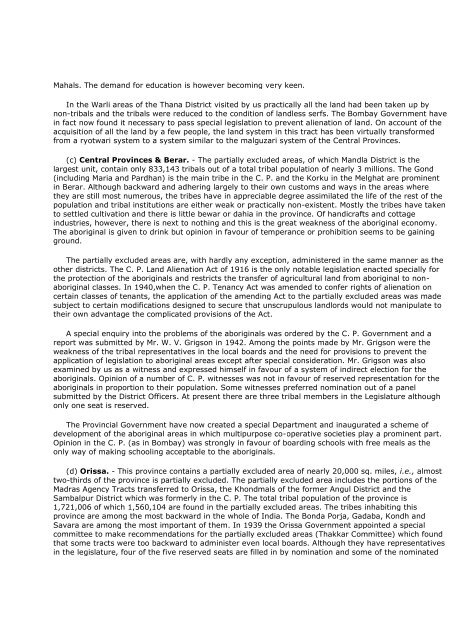
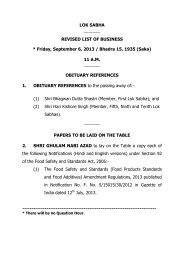
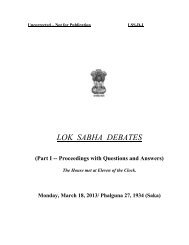

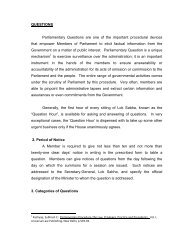
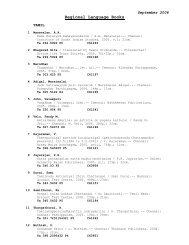

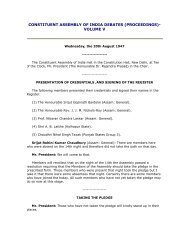
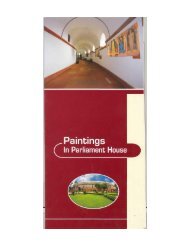
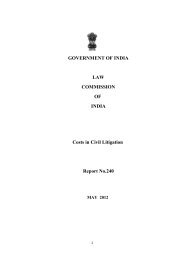
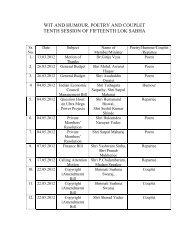
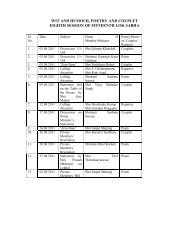

![gÉÉŌ A.]ÉŌ. xÉÉxÉÉ](https://img.yumpu.com/8015720/1/190x245/geeo-aeo-xeexee.jpg?quality=85)
